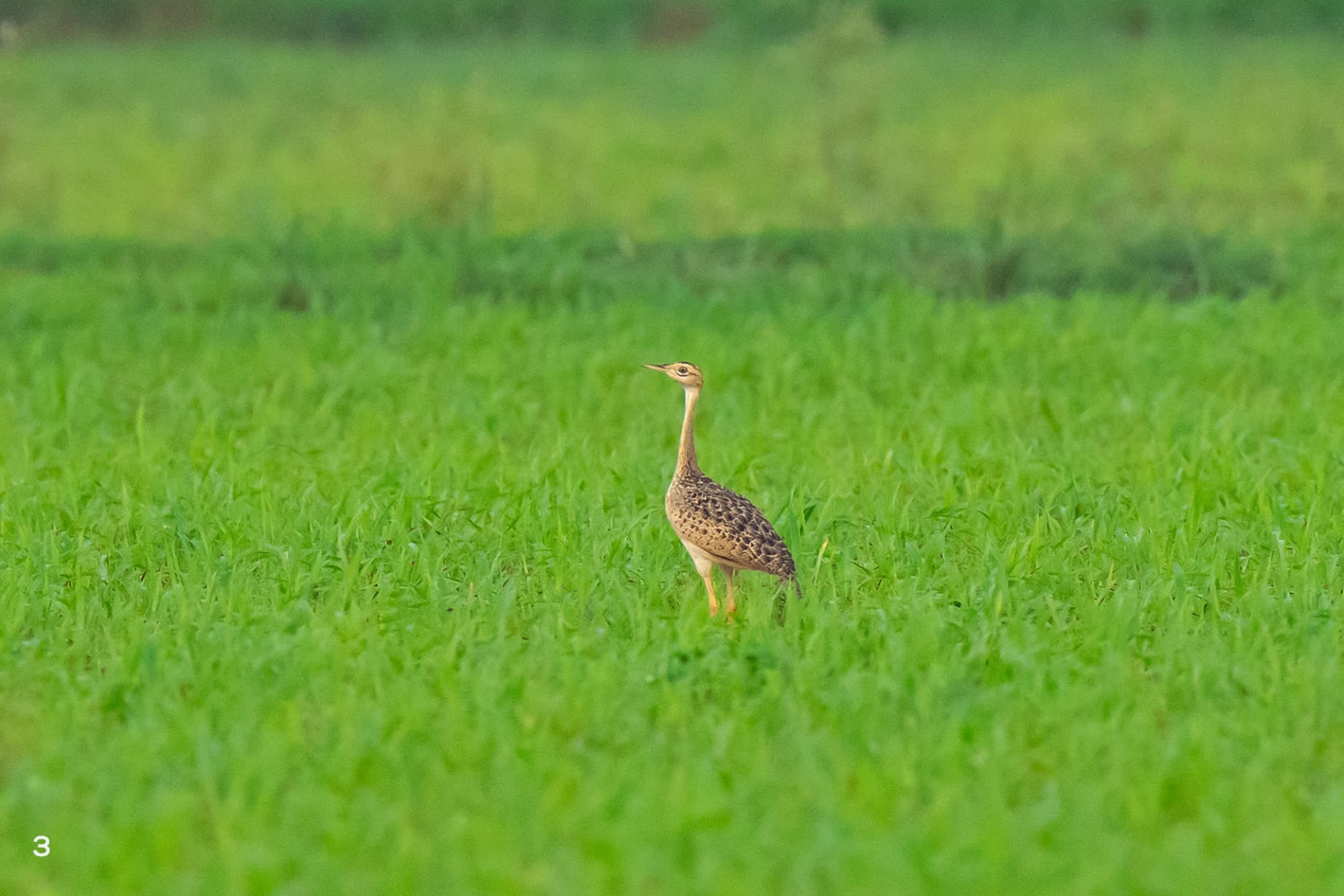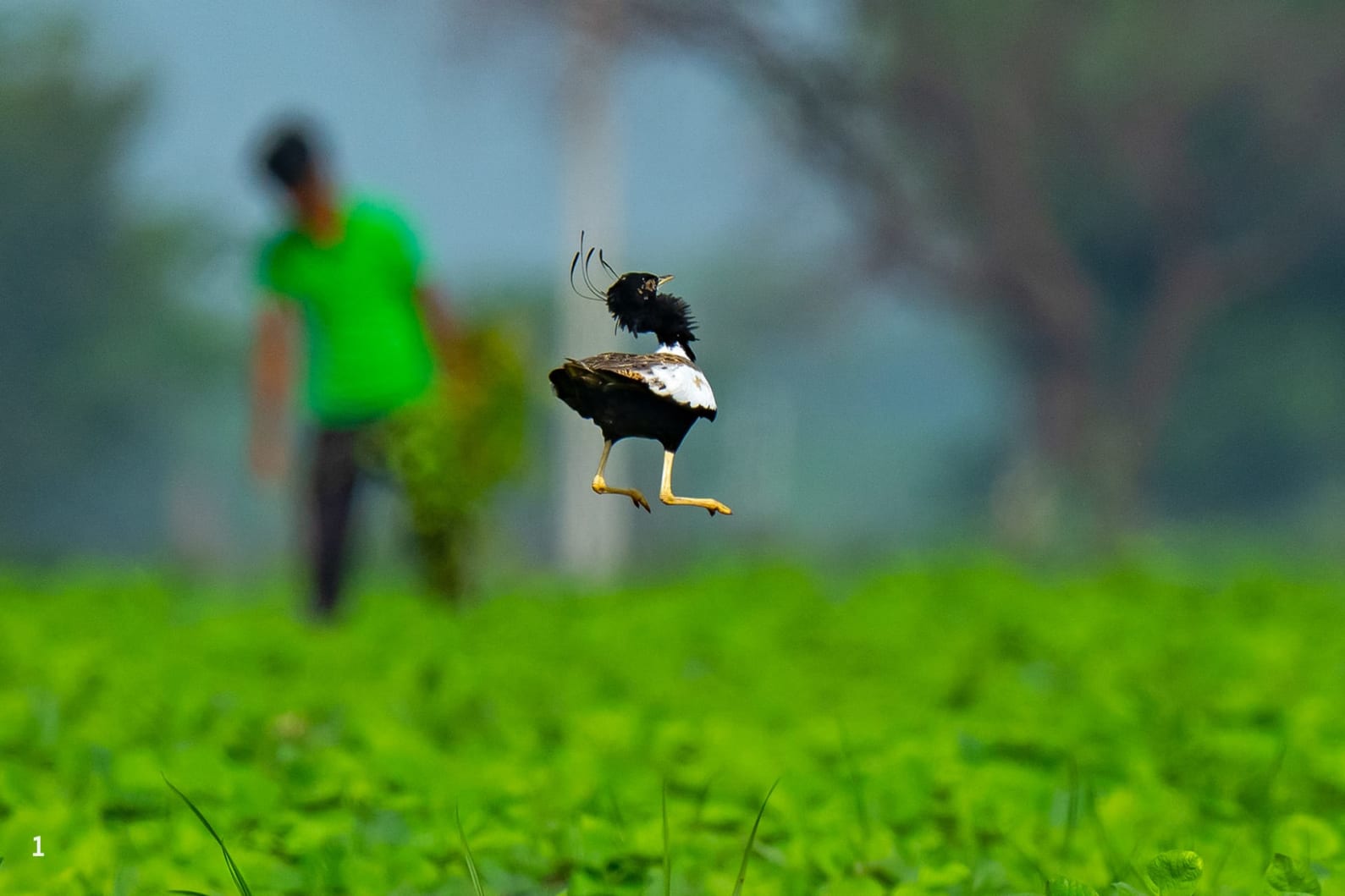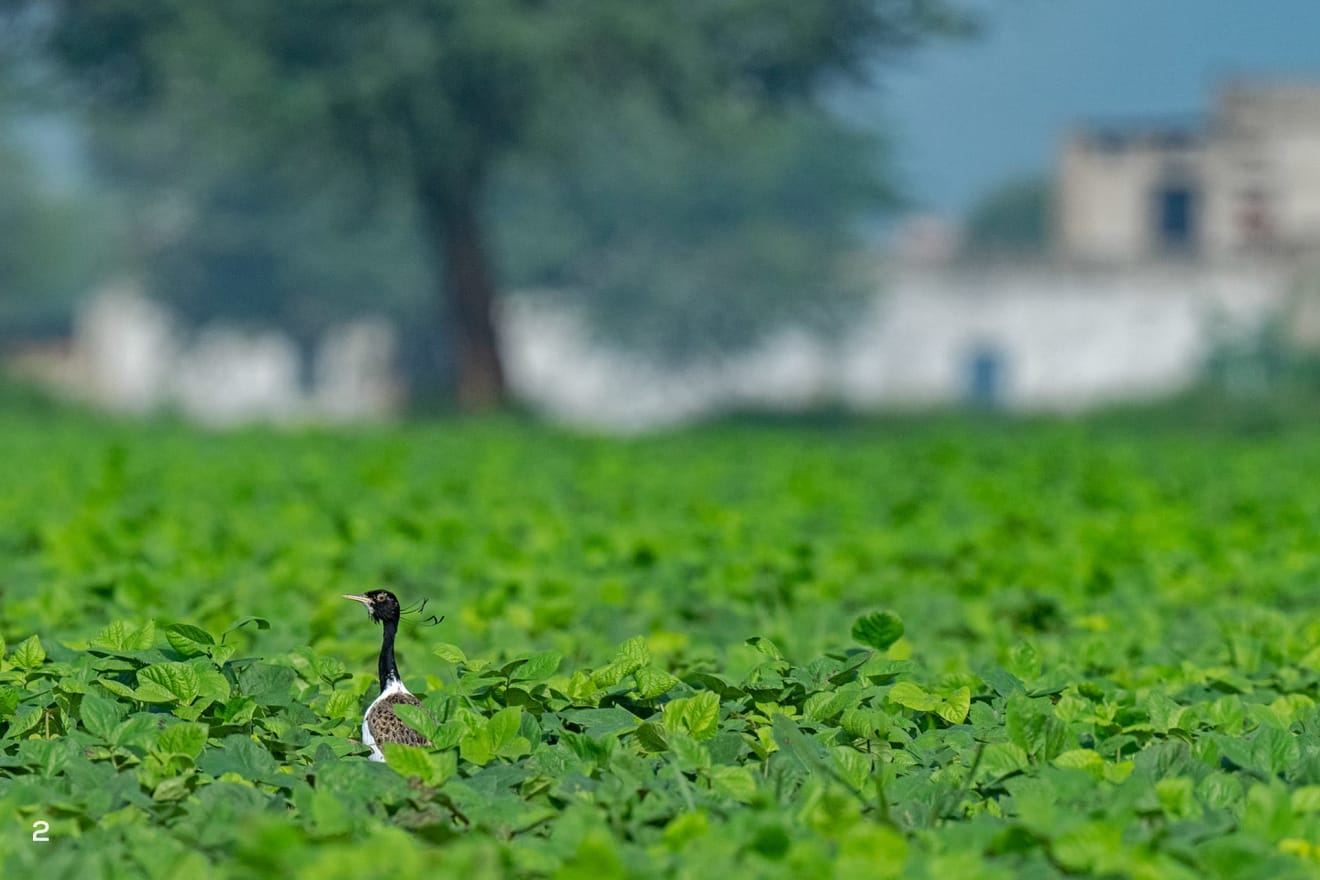 Listen to this article
•
15:34 min
Listen to this article
•
15:34 min
In the monsoon-soaked grasslands of western and central India, a vanishing act plays out each year — swift, silent, and spectacular. A flash of black-and-white plumage rises nearly two metres above a field of dew-laced grass. Midair, wings flutter, twisted head-plumes sway, and then just as suddenly, the figure disappears. This is the dance of the lesser florican (Sypheotides indicus), a species as secretive as it is stunning.
Critically endangered and endemic to the Indian subcontinent, the lesser florican is one of the world’s most elusive grassland birds. And its dramatic aerial courtship may soon become a lost ritual if conservation does not keep pace with habitat loss.
Courting rituals
Males of the species are best known for their remarkable breeding display. During the monsoon, they leap vertically from within tall grasses — dozens, sometimes hundreds of times a day. These jumps, which scientists believe serve both to attract females and assert territory, are spectacular, if brief. The bird barely hovers before dropping out of sight.
Spotting one is an act of patience and luck. I witnessed this phenomenon in August 2022, at Shokhaliya village in Rajasthan’s Ajmer district. Just before sunrise, mist hung low over the fields as we waited in silence. Suddenly, a male florican burst into the air, his plumes fluttering like silk ribbons. He leapt again. And again. For a few fleeting seconds, the grassland transformed into a stage, and the bird into a dancer performing in solitude.

Cover Photo: A vanishing act unfolds in the fields — a fleeting glimpse of the lesser florican, teetering on the brink of survival.
Tracking the elusive florican
During the breeding season, lesser floricans are found mainly in isolated patches of monsoon grassland across Rajasthan, Gujarat, Madhya Pradesh, and parts of Maharashtra. But for the rest of the year, their movements remain a mystery.
Tracking studies by the Wildlife Institute of India and Bombay Natural History Society (BNHS) are beginning to reveal clues. In 2023, a radio-tagged male was discovered making stopovers in Gujarat’s semi-arid scrublands — places where floricans were previously unrecorded. This suggests that the species may rely on a mosaic of habitats throughout the year, making targeted conservation efforts more urgent.
Grasslands: India’s forgotten ecosystem
The real crisis lies not with the bird, but with its habitat. India’s tropical grasslands, often misclassified as “wastelands”, are rapidly disappearing due to agricultural expansion, infrastructure development, and encroachment.
In key florican habitats, monsoon crops such as soybeans and cotton have replaced native grasslands. The use of heavy farm machinery, pesticides, and fencing during nesting season directly threatens ground-nesting birds like the florican. Climate change adds yet another layer of unpredictability, disrupting breeding cycles and vegetation patterns.

The lesser florican, which nests directly on the ground, is especially vulnerable. Females lay eggs in grass scrapes and raise chicks alone. Any disruption during this period, whether mechanical, chemical, or ecological, can lead to breeding failure.
Conservation Ground-Up
Despite these challenges, hope persists. In villages like Shokhaliya, Rajasthan’s forest department and conservation NGOs have engaged local farmers in florican-friendly practices. By leaving patches of grass undisturbed during the monsoon, farmers help protect vital breeding areas. Such community-led efforts are essential. They not only safeguard the birds but also reshape attitudes toward grasslands, transforming them from “empty” spaces into vital ecosystems deserving attention. Simultaneously, scientists are utilising drones, satellite mapping, and tagging technology to gain a deeper understanding of florican movements and population dynamics.
A Flagbearer for Grasslands
India hosts three bustard species: the great Indian bustard, the Bengal florican, and the lesser florican. All are endangered, and all depend on grasslands. Among them, the lesser florican stands out — not just for its acrobatic courtship behaviour but also as a symbol of everything fragile and overlooked about our open ecosystems.
Grasslands support pollinators, regulate carbon, and provide livelihoods. Protecting the florican is not just about a single bird—it’s about saving an entire biome that rarely features in our conservation imagination.
What You Can Do
● Talk about grasslands and their role in biodiversity.
● Follow citizen-science projects like eBird India and participate in local bird counts.
● Advocate for ecological classification of grasslands in policy and land-use planning.
● Support conservation groups working at the grassroots level with farmers and communities.
The leaps of the lesser floricans are becoming fewer with each passing year. But if we act now through awareness, community involvement, and policy reform, there’s still time to keep this monsoon dance alive.










